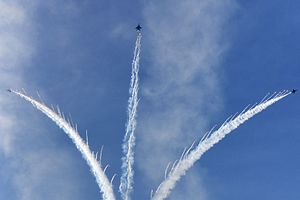On June 29, Singapore’s defense minister said that the city-state would soon make a decision about its plans to replace its current F-16 fighter jets.
As I have noted before in these pages, the Singapore Armed Forces (SAF), one of Asia’s most capable militaries, has been looking at ways to modernize its military within the constraints it has. These include modernizing and upgrading the Republic of Singapore Air Force (RSAF), which is commemorating its 50th anniversary this year (See: “Singapore’s Air Force at 50”).
One of the issues in this respect has been Singapore’s efforts to find a replacement for its aging F-16 fighter jets. Singapore currently operates 60 F-16 C/D Block 52 and Advanced Block 52 aircraft, and efforts have already begun to upgrade them with Lockheed Martin. But in recognition of several considerations, including the fact that the replacement requires a lead time of several years and that domestic messaging is a part of this process, Singapore has long been mulling platforms that could serve its needs.
Though no final public announcement has been made, Lockheed Martin’s fifth-generation F-35 fighter has been regarded as the top contender. Rounds of speculation have occurred over the years following comments by Singapore officials or other developments. Recently, the F-35B, the vertical takeoff and landing version of the aircraft, had been in Singapore for the first time at the Singapore Airshow in February (See: “What Does US Participation at the Singapore Airshow Reveal About Trump’s Asia Policy?”).
Last week, in an interview on Singapore’s defense developments ahead of SAF Day, Defense Minister Ng Eng Hen said that Singapore would announce a decision soon about the new fighter jet to take over from its F-16s, given that they would face obsolescence beyond 2030. Ng said Singapore had thought long and hard about it and had taken its time and would be making a definitive decision likely in the next few months.
Ng unsurprisingly did not get ahead of the announcement by suggesting which fighter platform Singapore would look to acquire, only saying that the government was considering “the usual suspects” that come up when a country chooses replacements, including the F-35, European Typhoon, Russian Sukhoi, and Chinese-made stealth fighters. He also noted a series of criteria that Singapore had considered in making its decision, including cost-effectiveness, ease of training and maintenance, and interoperability with key partners.
As Singapore’s search for an F-16 replacement continues, how it proceeds on this front, including its domestic messaging and the announcement itself will be interesting to watch within the context of other broader developments, including the RSAF’s anniversary this year and other ongoing efforts to modernize its military.

































